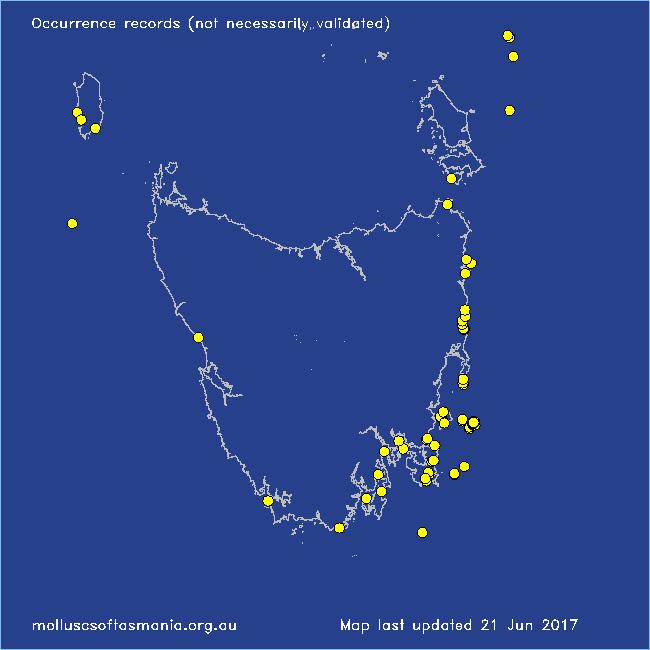
Sepiidae: Sepia cultrata Hoyle, 1885 (‘knifebone cuttlefish’)
Synonym(s): cultrata Hoyle, 1885 gemellus Iredale, 1926 macilenta Iredale, 1926.
Typical shell-length 55 mm. As with all cuttlefishes, the ‘shell’ is the animal’s rigid but buoyant internal support structure, which floats to the surface once the animal dies and may drift many kilometres before beaching. Lives in inshore and offshore waters in midwater. Native. Endemic to southeastern and southwestern Australia (NSW, TAS, VIC, SA and WA). In Tasmanian waters, this is an uncommon species, most likely to be beached in the S and E.
Classification
Class: Cephalopoda
Subclass: Coleoidea
Order: Sepiida
Superfamily: Sepiida – unplaced
Family: Sepiidae
Genus: Sepia
Localities for Sepia cultrata
Bangor: Lagoon Bay
Beerbarrel Beach
Bicheno: Diamond Island
Bicheno: Redbill Beach
Binalong Bay: beach
Blackman Bay: Porpoise Hole
Bruny Island: Neck Beach
Chain of Lagoons: Piccaninny Point
Clarke Island: Spike Bay
Denison Beach: Porch Rocks
Denison Beach: rocks at southern end
Denison Beach (unlocalised)
Dianas Beach (unlocalised)
King Island: Ettrick Beach
King Island: Grassy Harbour: Sandblow Bay
King Island (unlocalised)
Lauderdale: Seven Mile Beach
Little Musselroe Bay: Tree Point area
Maria Island: Bloodstone Beach
Maria Island: Hopground Beach
Maria Island: Return Point
Maria Island: Trigonia Corner
Marion Bay: Bream Creek foreshore
North Bruny Island: Roberts Point
Pirates Bay (unlocalised)
Port Arthur: Crescent Bay
Port Arthur: Denmans Cove
Port Arthur: Safety Cove
Port Arthur: Stinking Bay
Port Davey: Spain Bay
Schouten Island: Crocketts Bay
Seymour Beach: northern end
South Cape Bay: Lion Rock: beach to SE
Taroona: Dixons Beach
Trial Harbour


